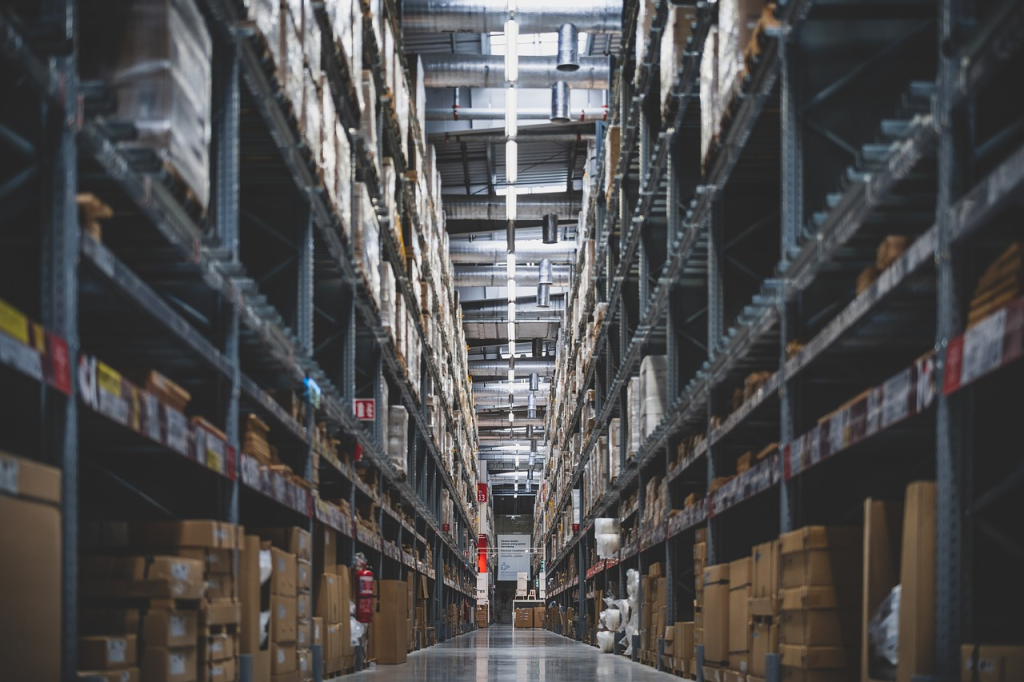In the dynamic and ever-evolving realm of warehouse operations, the backbone of optimal performance often hinges on the robustness and quality of the tools and equipment utilized. Amid this environment, metal lifting chains stand out as stalwart companions, known for their unwavering strength, reliability, and capacity to bear immense weights. This insightful post will guide you through an in-depth exploration of the intricate world of warehouse operations, shedding light on how these chains serve as indispensable assets that significantly enhance efficiency, safety, and the overall prosperity of such crucial working environments.

Understanding the Weight of Responsibility
Warehouse chains are not mere links of steel; they’re the literal backbone of moving heavy loads. Whether it’s to hoist a pallet of supplies, position machinery, or ensure secured storage of goods, chains bear massive responsibilities. They form the critical connection between the moving parts of a warehouse, acting as a lifeline for the intricate dance of inventory management and logistics. Understanding the right kind of chain for the job is not just crucial for any warehouse manager; it’s a safety imperative. Each link, grade, and type is designed for specific weights, environments, and challenges. An alloy lifting chain might be durable, but is it suited for continuous use in a situation that demands high flexibility and reduced wear? These questions are not academic; they are real-world decisions that directly impact a warehouse’s day-to-day functioning and long-term viability.
The Right Chain for the Right Task
Choosing the appropriate metal lifting chain for a specific task within a warehouse operation requires a nuanced understanding of both the chain’s capabilities and the task’s demands. It’s about matching the chain’s load capacity, durability against environmental conditions, and suitability for the frequency and type of movement expected. For instance, while a Grade 80 alloy steel chain might be a powerhouse for lifting heavy machinery, a stainless steel chain could be the better option for tasks involving exposure to corrosive substances. Additionally, considering chains for lashing is essential to ensure secure fastening during transport or storage. This level of detail in selection ensures not only the safety of the operations but also extends the lifespan of the chains and the goods they handle, ultimately contributing to a smoother, more efficient workflow.
The Unseen Champions of Load Bearings
The efficiency of chain usage in warehouses goes beyond mere weight-bearing capacity. It involves the intricate process of load balancing, strategically designed to minimize ground and warehouse infrastructure impact. For instance, suspension chains play a vital role in optimizing storage space by enabling secure vertical stacking, ultimately reducing the footprint needed for storage operations.
Furthermore, these chains are not merely static components of storage facilities; they are integral to a dynamic system where speed and precision are just as crucial as strength. The incorporation of high-strength alloy steel chains ensures that loads can be swiftly maneuvered to meet just-in-time logistics requirements, thus reducing the risks of breakage or operational delays due to faulty equipment. By embracing these advanced chain systems, warehouses can enhance their operational efficiency and safety standards while streamlining their storage processes for greater productivity.
Crafting a Safe and Secure Logistics Dance
Warehouse safety is like a complex mosaic, where each element plays a crucial role. Among these components, chains act as shatter-proof tiles, providing stability and reliability. Ensuring adherence to strict regulations and implementing best practices for lifting equipment are paramount. From routine inspections to comprehensive training programs, every aspect must be meticulously followed to avoid any safety breaches related to chains that could result in severe accidents. The Economics of Chain Utilization However, safety measures extend beyond just preventing worst-case scenarios. They are also about safeguarding the well-being of the workforce. When used correctly, chains not only enhance safety but also help prevent common injuries like back strains that can occur when handling heavy loads. By acting as a protective barrier, chains ensure that the intricate dance of warehouse operations harmonizes with the health and safety of the workers.
Warehousing operations are as much about the bottom line as they are about perfect execution. Smart utilization of chains can lead to significant cost savings. By streamlining the movement of goods, reducing the need for human exertion, and maximizing vertical space, chains can help in keeping operational costs under control. A high-quality, well-maintained chain doesn’t just save in terms of direct financial benefits; it adds to the longevity of other warehouse equipment. By bearing the brunt of the load, chains protect forks, hooks, and other handling devices from excessive wear and tear.
Environmental and Ergonomic Impacts
In a world where sustainability and employee well-being are increasingly becoming benchmarks, chains play a pivotal role in shaping environmental and ergonomic standards. The shift towards environmentally friendly alloys and innovative chain designs is gradually but significantly transforming industrial practices, providing options that resonate with a more sustainable future.
Moreover, beyond the environmental impact, it is crucial to address the noise levels and vibrations associated with heavy lifting tasks within warehouse environments. By incorporating premium chains with specialized features for sound and vibration absorption, these disruptive elements can be mitigated, fostering a more comfortable and humane workplace setting.
Chains in Automation: The Future of Warehousing
The warehouse of tomorrow is not just about megastructures or super-optimized software; it’s also about the seamless integration of emerging technologies with mundane, yet monumental, chains and lifting equipment. We are entering an era where chains are as likely to be controlled by algorithms as by human hands.
Robotic arms, automated guided vehicles (AGVs), and a plethora of cutting-edge handling equipment are at the cusp of making traditional warehousing look like a relic. Central to these innovations will be the indomitable chain, evolving from a tool for sheer strength to a conductor of digital symphonies that define the next generation of logistics.

The pivotal role of metal lifting chains in the intricate dance that is warehouse operations cannot be overstated. These chains, essential for load-bearing tasks, transcend their physical function to embody the essence of a technological revolution. They serve as not just mere equipment but as the very backbone of support that underpins the smooth functioning of warehouses on a daily basis. Moreover, their significance extends beyond the confines of warehouses, influencing economic efficiency, ensuring employee safety, and fostering a sustainable future. Each link in these chains tells a story of progress and potential, symbolizing the connection between aspirations and actual deliveries, both literally and figuratively speaking.




Recent Comments